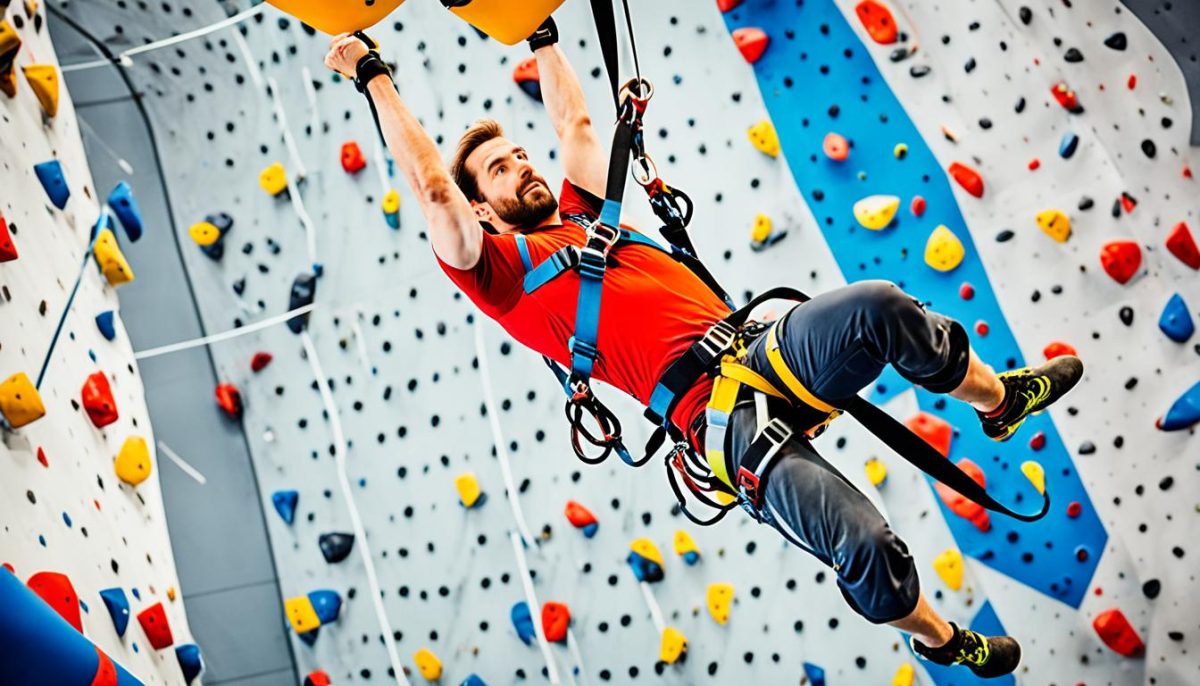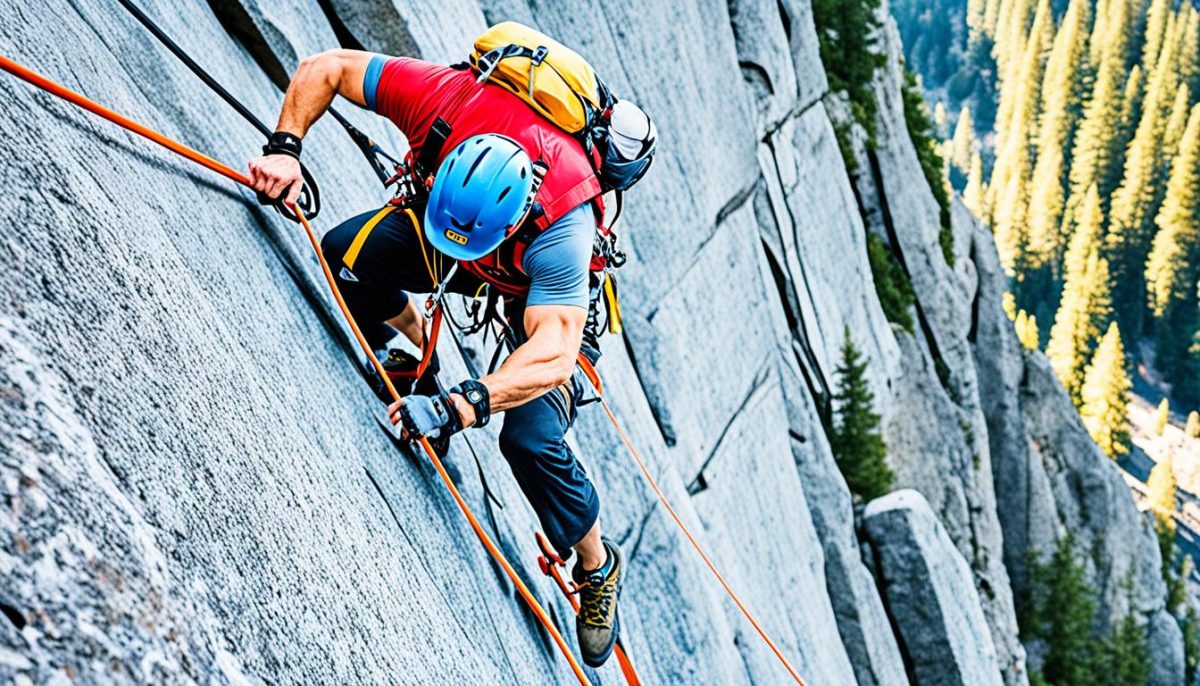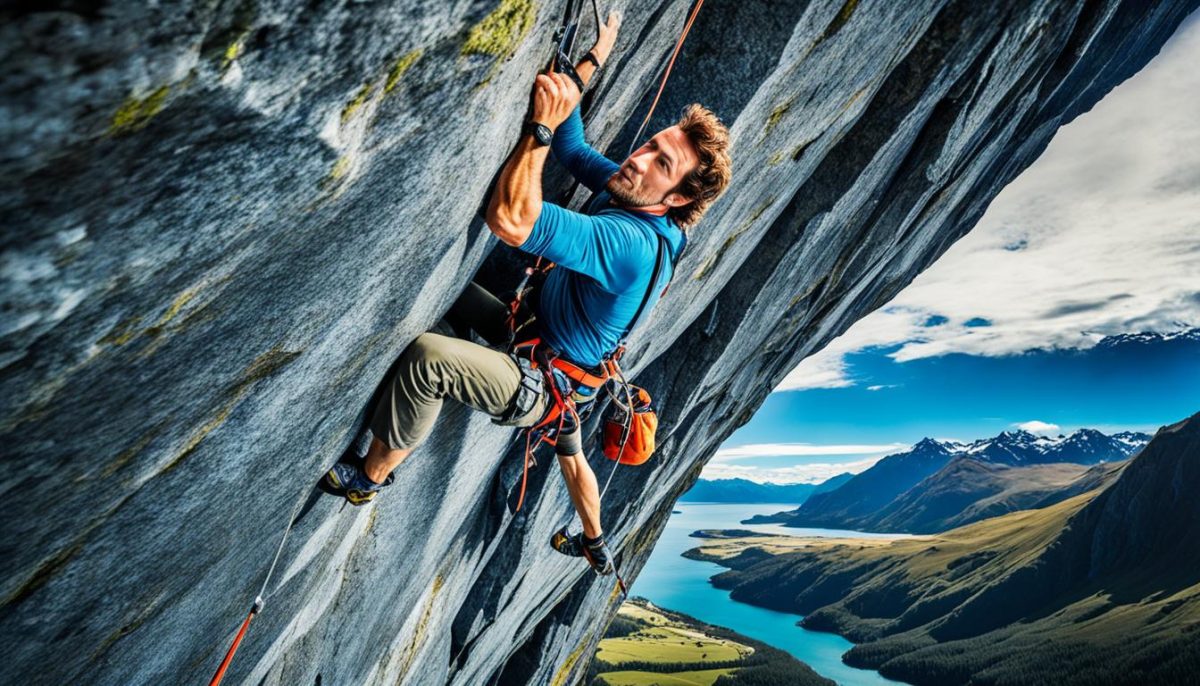Welcome to our guide on finding the perfect fit for your climbing harness. The right fit is crucial for both safety and comfort during your climbs. In this section, we will explore the factors that determine how tight or snug your harness should be to achieve a secure and enjoyable climbing experience.
Choosing the correct size and adjusting your harness properly will provide the necessary support and freedom of movement you need. So let’s dive into the details and learn how to find the ideal fit for your climbing endeavors.
Stay tuned for the following sections where we will discuss how to measure yourself using a sizing chart, the significance of leg loops and waist belts, and the role of adjustable buckles in achieving a secure fit.
By the end of this guide, you will understand the importance of ensuring safety and comfort through proper climbing harness fit. So, let’s get started on your journey to finding the perfect fit for your climbing harness.
Understanding Climbing Harness Fit
When it comes to climbing harnesses, achieving the perfect fit is crucial for both safety and comfort. In this section, we will take a closer look at the various aspects of climbing harness fit and how they contribute to ensuring a secure and enjoyable climbing experience.
Finding the Right Size with a Sizing Chart
Before purchasing a climbing harness, it’s essential to measure yourself accurately to determine the correct size. Most reputable climbing gear brands provide sizing charts that take into account waist measurements and leg loop sizes. By referring to these charts, you can select a harness that fits your unique body shape and size.
Remember that the waist belt should sit snugly around your waist without causing any discomfort or restriction. Similarly, the leg loops should fit comfortably without being too loose or too tight. Achieving the right size ensures optimal performance and prevents any safety hazards.

The Importance of Leg Loops and Waist Belt
Properly fitting leg loops and waist belt play a crucial role in the overall comfort and security of a climbing harness. Leg loops should sit snugly around your thighs without causing unnecessary pressure or chafing. They should provide support and stability during your climbs.
The waist belt, on the other hand, should distribute the weight evenly across your waist and hips. This prevents any unnecessary strain on your lower back and increases your overall comfort on the wall.
The Role of Adjustable Buckles
Adjustable buckles are a key feature in climbing harnesses, allowing you to customize the fit according to your preferences and needs. These buckles enable you to tighten or loosen the leg loops and waist belt as required, providing you with a secure and personalized fit.
Adjustable buckles also allow for easy adjustments when wearing different layers of clothing or shifting between climbing activities. They give you the flexibility to adapt the harness to changing conditions, ensuring a comfortable and secure fit throughout your climb.
By understanding the importance of sizing charts, leg loops, waist belts, and adjustable buckles, you can ensure that your climbing harness fits you perfectly. This optimal fit minimizes potential safety risks and discomfort while maximizing your enjoyment and performance on the wall.
Finding the Ideal Tightness
When it comes to your climbing harness, finding the ideal tightness is crucial for both safety and comfort. A well-fitting harness ensures that you can focus on your climb without any distractions or discomfort. In this section, we will explore two essential methods to determine the perfect tightness: the hanging test and the two-finger rule.
The Hanging Test: Ensuring Comfort and Support
The hanging test is a simple yet effective way to check if your harness provides the right level of comfort and support. During this test, you suspend yourself in your harness, simulating the conditions of an actual climb. Pay attention to any discomfort, sagging, or pressure points that may arise. Your harness should hold your body securely without causing any pain or restricting your movement.
By conducting the hanging test, you can evaluate the fit of your harness and make any necessary adjustments to ensure optimal safety and comfort. Remember, a harness that is too loose may put you at risk of falling out, while one that is too tight can lead to restricted movement and discomfort.
The Two-Finger Rule: Achieving a Snug Fit
The two-finger rule is a useful guideline to help you determine how snug your climbing harness should be. Here’s how it works: when you are wearing your harness, you should be able to fit two fingers comfortably between your body and the harness. This indicates a snug fit that provides the necessary security without excessive tightness.
By following the two-finger rule, you can maintain a balance between a secure fit and the range of movement required for climbing. Keep in mind that different brands or models of harnesses may have slightly different fit requirements, so it’s essential to refer to the manufacturer’s guidelines and adjust accordingly.

Remember, finding the ideal tightness for your climbing harness is crucial for your safety and enjoyment during climbs. By performing the hanging test and following the two-finger rule, you can ensure a secure and comfortable fit that allows for a full range of movement. Now that you have mastered the art of finding the perfect fit, let’s move on to the next section and explore how to ensure safety and comfort while wearing your harness.
Ensuring Safety and Comfort
A properly fitting climbing harness not only provides safety but also ensures comfort during your climbing adventures. One key aspect of a well-fitting harness is its ability to distribute your weight evenly, reducing strain on specific areas of your body.
Weight distribution is crucial as it helps prevent fatigue and discomfort during prolonged climbs. A harness that effectively distributes the weight across your waist and leg loops allows you to maintain balance and stability, enhancing your overall climbing experience.
In addition to weight distribution, a good harness minimizes the risk of pressure points and rubbing. These factors can cause discomfort and distractions while climbing, affecting your concentration and performance. By finding a harness that fits properly, you can minimize these issues and focus on your climbing goals.
Gear loops and adjustability are two essential features that contribute to both safety and comfort. Gear loops allow you to conveniently carry your equipment, keeping your hands free for climbing. They provide easy access to your gear, making it more efficient and enjoyable to navigate challenging routes.
The adjustability of a harness is another crucial factor. A harness with adjustable waist and leg loops ensures a snug fit tailored to your body type. This customization allows you to achieve the ideal balance between security and comfort, enabling you to climb confidently and make smooth, controlled movements without restrictions.




